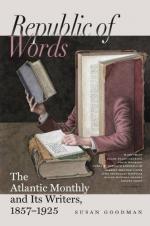[Footnote 12: Thus, in Kent, the Hobby-Horse is called hooden, i.e. wooden. It is curious that Orlando, in As You Like It, (who represents the outlaw Gamelyn in the Tale of Gamelyn, a tale which clearly belongs to the cycle of Robin Hood,) should be the son of Sir Rowland de Bois. Robin de Bois (says a writer in Notes and Queries, vi. 597) occurs in one of Sue’s novels “as a well-known mythical character, whose name is employed by French mothers to frighten their children.”]
[Footnote 13: Kuhn, in Haupt’s Zeitschrift fuer deutsches Alterthum, v. 472. The idea of a northern myth will of course excite the alarm of all sensible, patriotic Englishmen, (e.g. Mr. Hunter, at page 3 of his tract,) and the bare suggestion of Woden will be received, in the same quarters, with an explosion of scorn. And yet we find the famous shot of Elgill, one of the mythical personages of the Scandinavians, (and perhaps to be regarded as one of the forms of Woden,) attributed in the ballad of Adam Bel to William of Cloudesly, who may be considered as Robin Hood under another name.]
[Footnote: 14. Unless importance is to be attached to the consideration that May is the Virgin’s month.]
[Footnote 15: As in Tollett’s window.]
[Footnote 16: In Lord Hailes’s Extracts from the Book of the Universal Kirk.]
[Footnote 17: More openly exhibited in the mock battle between Summer and Winter celebrated by the Scandinavians in honor of May, a custom still retained in the Isle of Man, where the month is every year ushered in with a contest between the Queen of Summer and the Queen of Winter. (Brand’s Antiquities, by Ellis, i. 222, 257.) A similar ceremony in Germany, occurring at Christmas, is noticed by Kuhn, p. 478.]
[Footnote 18: Hence the spring begins with March. The connection with Mars suggests a possible etymology for the Morris,—which is usually explained, for want of something better, as a Morisco or Moorish dance. There is some resemblance between the Morris and the Salic dance. The Salic games are said to have been instituted by the Veian king Morrius, a name pointing to Mars, the divinity of the Salli.—Kuhn, 488-493.]
[Footnote 19: The name Robin also appears to Kuhn worthy of notice, since the horseman in the May pageant is in some parts of Germany called Ruprecht (Rupert, Robert).]
[Footnote 20: Edinburgh Review, vol. 86, p. 123.]
[Footnote 21: See some sensible remarks in the Gentleman’s Magazine for March, 1793, by D. H., that is, says the courteous Ritson, by Gough, “the scurrilous and malignant editor of that degraded publication.”]




